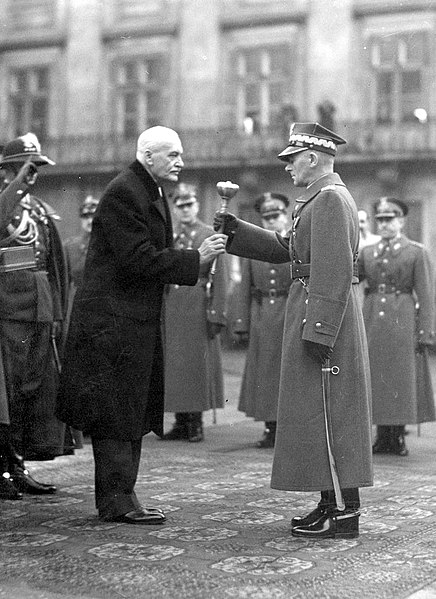Eastern Borderlands or simply Borderlands was a term coined for the eastern part of the Second Polish Republic during the interwar period (1918–1939). Largely agricultural and extensively multi-ethnic with a Polish minority, it amounted to nearly half of the territory of interwar Poland. Historically situated in the eastern Polish–Lithuanian Commonwealth, following the 18th-century foreign partitions it was divided between the Empires of Russia and Austria-Hungary, and ceded to Poland in 1921 after the Treaty of Riga. As a result of the post-World War II border changes, all of the territory was ceded to the USSR, and none of it is in modern Poland.
Leon Wyczółkowski "Ploughing in the Ukraine"
Members of the German Ordnungspolizei shooting naked women and children in the Mizoch Ghetto, October 1942
Massacres of Poles in Volhynia in 1943. Most Poles of Volhynia (now in Ukraine) had either been murdered or had fled the area.
the Skirmunt estate, Moładaŭ, by Napoleon Orda 1875
The Second Polish Republic, at the time officially known as the Republic of Poland, was a country in Central and Eastern Europe that existed between 7 October 1918 and 6 October 1939. The state was established in the final stage of World War I. The Second Republic ceased to exist in 1939, after Poland was invaded by Nazi Germany, the Soviet Union, and the Slovak Republic, marking the beginning of the European theatre of the Second World War. The Polish government-in-exile was established in Paris and later London after the fall of France in 1940.
Polish defences at Miłosna, during the decisive Battle of Warsaw, August 1920
Marshal Józef Piłsudski, Chief of State (Naczelnik Państwa) between November 1918 and December 1922
The May Coup d'État (1926)
Ignacy Mościcki, President of Poland (left), Warsaw, 10 November 1936, awarding the Marshal's buława to Edward Rydz-Śmigły








